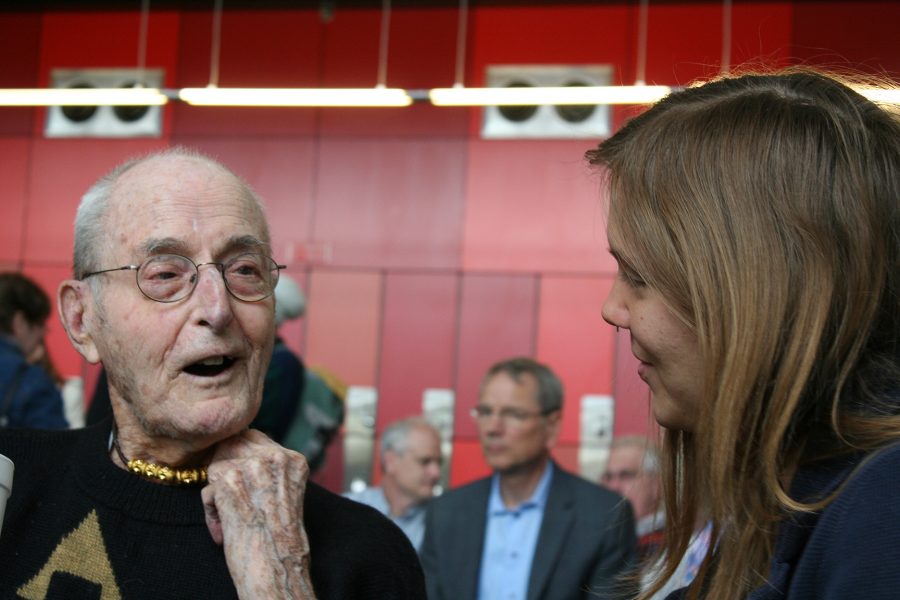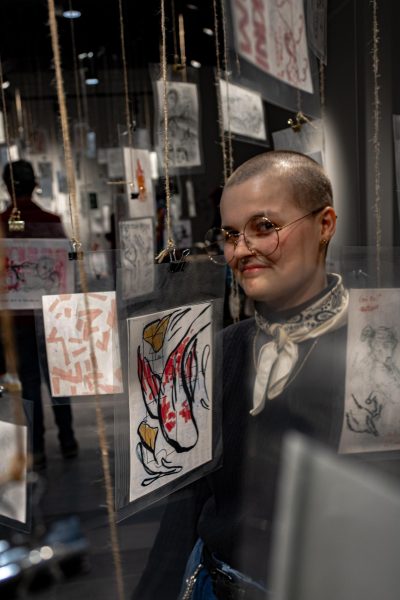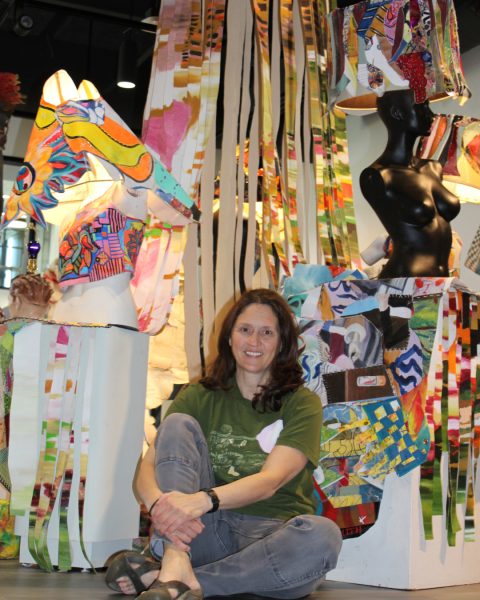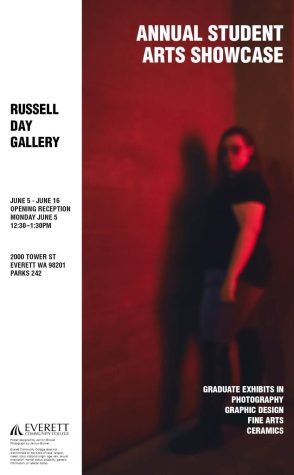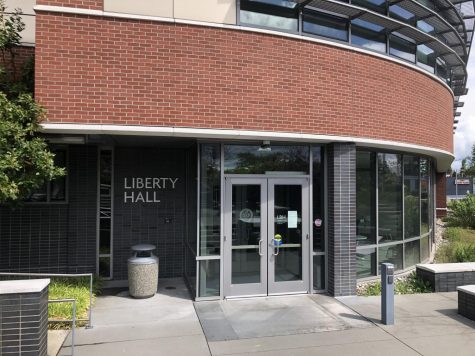Russell Day Visits EvCC
After the presentation, the crowd was free to roam. Some admired the sculpture while others admired the sculptor himself, pictured here. Weller, a former student of Day, said during the ceremony, “Look around this city and you’ll see the influence of Russell. He is my mentor, and he is my friend. I am very lucky.”
It is over 238 pounds and hangs in the entrance of Whitehorse Hall.
The untitled sculpture was unveiled the morning of May 27, 2016 to a crowd of students, staff and faculty.
And the sculptor himself, Russell Day.
For the ceremony, the usual tables in Whitehorse Hall were replaced with rows of chairs, and the side wall was lined with a small table of refreshments. Mounted in front of the entrance window was the sculpture, hidden underneath a black covering.
Day’s sculpture sat on his panorama balcony for over 30 years. It required a team of professionals for its restoration and conservation before it was relocated to EvCC.
“It’s been a real honor and pleasure,” former Russell Day Gallery director Lowell Hanson said about participating in the restoration process. “I think Russell is greatly pleased. I hope he will be.”
Day was. He later said in an interview with The Clipper, “I’m honored. They did a beautiful job.”
Day founded and chaired the EvCC art program and taught from 1947- 1976. He is best known for his work with silver and glass; his late wife Marjorie Day often featured his art in the form of jewelry.
The Russell Day Art Gallery is named after the 103-year-old man.
Internationally-renowned artists Chuck Close and Dale Chihuly are but a few of the many students to have passed under Day’s mentorship.
“I started working with glass,” Chihuly said. “And no one knew glass except Russell.”
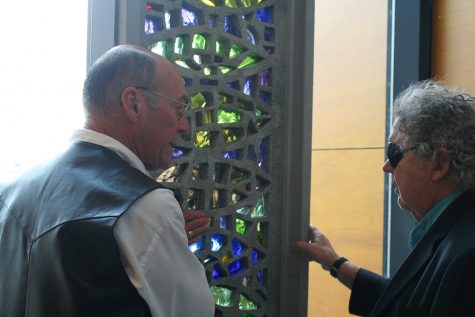
Left to right: Lowell Hanson and Dale Chihuly. Chihuly was a student when he first saw the sculpture. The first glass bubble he had ever blown was by using a ceramic kiln in his basement and a blow pipe. He was “so excited” that he called Day, who immediately drove over in his orange Corvette.
Long-time EvCC photography teacher Lloyd Weller participated in the restoration process along with art teacher and previous Russell Day Gallery director Lowell Hanson, AMTEC professor Julie Boerger and EvCC Instructional Technician Miles Labitzke. Weller was the last speaker before the sculpture was unveiled.
“I was always fascinated with what light was doing… So, I was using my glass as a modulator of light,” Weller began to read the sculpture’s plaque aloud. It is a quote by Day.
At Weller’s close, the curtain was removed. The crowd gasped. Someone laughed breathlessly.
The sculpture is the product of a process called Dalle De Verre, an artistic mixture of concrete and glass to produce a colorful design. The public is advised to enjoy the sculpture in the summer afternoon where “you’ll see some amazing color,” according to Weller.
After the crowd got an eyeful of his sculpture, Day stepped up to the microphone and told the audience its origin.
“In 1954, I was in Europe for the summer and it was my first exposure to the thick glass I used there.” He had a dealer in New York give him the same type of glass, but he “couldn’t do anything to it.”
It was about an inch thick, and 8 inches wide and 8 inches long for each color. He broke the panes up, then used the shards for his sculpture.
Aside from his artwork, students still benefit from Day’s devotion to the arts. A scholarship is awarded every year in Marjorie and Russell Day’s name. This year’s winner was Beth Ha, a ceramics student.
The last part of the sculpture’s plaque reads: “My approach to the art world is how you can achieve richer surroundings- environment. To me, this is very important… Once you achieve it, it’s a great feeling.”

What interests you about journalism?
The people. The stories. The short sentences. Honestly, I just about love it all.
Where are you headed...

